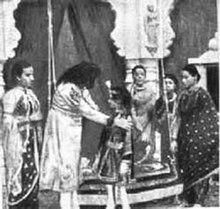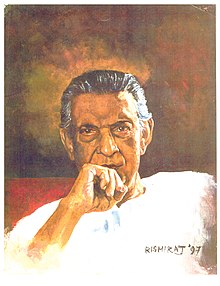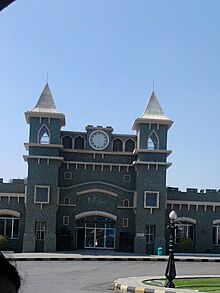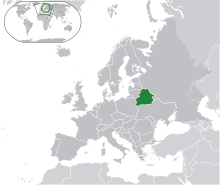Wikipedia:Wikipedia Signpost/Single/2012-09-17
Signpost expands to Facebook

Regular readers will remember this column last week, where the Signpost announced a new Android app created by Yuvi Panda and Notnarayan, free for download on Google Play.
Last week's column focused on the physical changes in news consumption over the last twenty years, from paper to personal computers to tablets and smartphones. I also remarked on the emerging roles of blogs and news aggregators in distributing the information traditionally conveyed by newspapers. Yet these two shifts, while important, leave out a third dimension: social networking. In recent years, websites like Facebook, Google+, and Twitter have fundamentally altered the way many internet users receive news. Twitter, in particular, has been the starting point for many crucial news stories, like the killing of Osama bin Laden in May 2011, where a Pakistani citizen was the first to report and tweet about helicopters over Abbottabad.
With the importance of social network services in mind, the Signpost has now expanded to include Facebook. The page is located at facebook.com/wikisignpost, and we invite you to "like" the page and join the discussion there. We are aiming to link to several interesting stories throughout the week, both from the Signpost and outside publications, for you to comment on.
We hope this will give readers more comfortable with social networking a chance to comment in a familiar environment. This will also allow us to provide news to you throughout the week, rather than waiting for the usual weekly issues.
You can also connect with us via Twitter or Identi.ca.
—The ed17, Signpost editor-in-chief
Reader comments
Action! — The Indian Cinema Task Force







This week, we shine the spotlight on the Indian Cinema Task Force, a subproject that seeks to improve the quality and quantity of articles about Indian cinema. As a child of WikiProject Film and WikiProject India, the Indian Cinema Task Force shares a variety of templates, resources, and members with its parent projects. The task force works on a to-do list, maintains the Bollywood Portal, and ensures articles follow the film style guidelines. With Indian cinema celebrating its 100th year of existence in 2013, we asked Karthik Nadar (Karthikndr), Secret of success, Ankit Bhatt, Dwaipayan, and AnimeshKulkarni what is in store for the Indian Cinema Task Force.
What motivated you to join the Indian Cinema Task Force? Do you have any favorite directors, actors, or actresses?
- Karthik Nadar: Well, Indian cinema itself motivated me to join the task force. Its the excitement, the glamour, the vandalism related to articles and various other factors which also drove me to work on articles related to Indian cinema.
- Secret of success: I have been an ardent admirer of Indian cinema ever since I was a child. Before creating an account, I used to refer to Wikipedia to have a look at the box office and the critical reception of a film before watching it. When I found out that several articles were extremely poor in terms of their content, I joined Wikipedia with the primary intention of improving these articles.
- Ankit Bhatt: My cinematic experience began with Indian cinema, and I have had a constant fascination with cinema as a whole. So it was something of a natural step for me to shift into this task force (I had begun editing in Wikipedia's Sports project). In addition, the general quality of Indian cinema articles is nothing eye-popping – another strong motivator. Unfortunately, my contributions have decreased a lot due to college, but I will be back on radar pretty soon.
To the uninitiated, Indian cinema is synonymous with Bollywood. Is this a mistake? Share with us some of the variety found in Indian cinema.
- Karthik Nadar: Indian cinema is not a synonym of Bollywood, but both would sound incomplete without each other. It is a mistake which is now being corrected by the growth of the South Indian film industry.
- Dwaipayan: Cinema of India is not at all synonymous with Bollywood, the latter representing only the Hindi film industry based in Mumbai. In 2011, among 1,255 films certified by the Central Board of Film Certification (including 147 films dubbed from one language to another), 206 films were in Hindi; Telugu films were in second position with 192 films (please refer to page 17 and 18 of this document). Indeed, in the award circles, non-Hindi Indian films are better known than the Hindi ones; Satyajit Ray, the Academy Award-winning director made films primarily in Bengali.
- Secret of success: The fact that Bollywood is not synonymous with Indian cinema does not conflict with its superiority over regional industries. Bollywood has played a key role in the political, social and ethnic aspects of the country and exhibited the diverse culture of India to a much wider audience, as compared to regional industries. Due to their political and social impact, films like My Name Is Khan have shown the potential of Bollywood to Islamic audiences, while films like 3 Idiots have driven home strong messages regarding education systems all over the world. An Indian film has a greater chance of receiving a positive response from the critics and audience alike if it carries a message relating to the need of the hour.
- Ankit Bhatt: Being in India, I can assure you that Bollywood is not, in any way, a synonym for Indian cinema as a whole. Indian cinema exhibits great variety in terms of the language, reach and style. Sadly, outside India, this misconception exists for several reasons, and its effect is felt in the quality of the articles pertaining to "regional industries" like the Marathi and Bhojpuri film industries. That does not discount other film industries which are as much a part of Indian cinema as Bollywood; industries like the Tamil film industry are an example of well-developed commercial film-making, while Bengali and Malayalam film industries display great artistic quality.
How does Wikipedia's coverage of Indian cinema compare to that of North American and European cinema? Are there any significant gaps in Indian cinema coverage?
- Dwaipayan: The coverage of North American cinema is more "meaty". Hollywood film (or film personality) articles contain more data and reliable references. I do not have a good idea about coverage of European films except for famous and award-winning ones. Indian film-related articles often lack such good information. Of course there are multiple good articles and some featured articles pertaining to Indian cinema, but the difference in the availability and quantity of information between Hollywood and Indian cinema is remarkable. This probably stems from the lack of readily accessible reference works for Indian cinema.
- Secret of success: More editors focus on Hollywood articles, due to the output generated, its wide appeal and immense popularity. It is no secret that Hollywood articles remain more "complete" compared to the ones under this task force. The gap remains as wide as ever. But due to India's tremendous economic growth, Bollywood is also growing at the same pace and is likely to reach the level of Western cinema in a matter of a few years.
- Ankit Bhatt: It is quite obvious that English-based film industries enjoy great advantages due to the widespread and international use of the language. However, we are progressing very well through the dedication of a number of committed editors who are striving for better quality and greater recognition, and who are always on the look-out for similar people who can join the task force and assist us in our journey. I personally do not believe in outpacing "others" since its all for the improvement of Wikipedia in the end, so I can't really comment on "when we'll get there".
Does the project run into any notability issues for films, directors, actors, and actresses that are not well known outside India or outside particular regions of India? How does the project handle these situations?
- Karthik Nadar: Issues persist for regional films, and sometimes for Bollywood films too. Lack of notability lands many articles in the deletion list. Applying the basic Wikipedia guidelines to the aspects of content, budget and box office is always a problem; initiating a consensus-building procedure is sometimes the only option left.
- Dwaipayan: Yes, some films or cast and crew members may not be adequately reported on by the media, and so it might be difficult to establish the notability of the concerned article. This is particularly true in the case of old films. With the increasing reach of the Internet, less notable film personalities sometimes get more coverage than significant film personalities due to a lack of references. Film-related books may also not be easily available for users in such cases.
- Ankit Bhatt: While we do face such situations several times, it is generally sorted out through discussions, be it at article talk pages, an RfC or AfD. Having said that, the policies governing Wikipedia are not exactly transparent and are often prone to misunderstanding. In addition, the usual problem of vandalism does occur. We can never be rid of this problem since notability will mean different things for different people, even with the presence of a single policy, so this area is always a work in progress.
- AnimeshKulkarni: I have seen a few non-Indian editors raising notability issues on regional film articles or old film articles. The lack of online sources in the English language media is the primary reason for this. Of course, the editors abide by Wikipedia's policies concerning notability and verifiability. But they mostly neglect the policy of assuming good faith. But I suppose this won't change anytime soon.
As a joint task force run between WikiProject Films and WikiProject India, do you share a lot members and resources with these projects? Are there any downsides to having two parent projects?
- Karthik Nadar: WP Films and WP India, both are helpful, but WP India has various branches and hence it is really impossible for it to concentrate and work on a single WikiProject. On the other hand, WP India should be grateful to Indian Cinema Task Force for taking any article to GA level compared to any sub-projects by WP India.
- Dwaipayan: Personally I do not participate much in WP Film activities, so I'm not aware of any shared activities. There are some active members shared by the two projects.
- Secret of success: Many of the editors of the Indian cinema task force share a higher level of contact with WP India compared to WP film because Indian cinema plays a key role in presenting Indian culture, unlike in the west. But one cannot deny that WP film's contributions to this task force are invaluable in all measures.
- Ankit Bhatt: WikiProject Film is helpful in a variety of ways, and has also brought in a say for Indian cinema by having an INCINE task force member as one of the project's co-ordinators. However, according to me, I find very little relationship between WikiProject India and our task force, and both have stayed aloof from each other for quite some time. It would be good for everybody if this changes, especially since we have contributed 9% of the former's featured articles and 22% of their good articles.
- AnimeshKulkarni: We do share members with WikiProject India but not so many with WikiProject Films. WikiProject Films mostly concentrates on American and European films. INCINE is never even notified of any happenings at WP Films. (Lets assume there are no such happenings there to notify about.) If ever there dawns a day where we have to discuss something with WP Films, it takes huge amount of time and effort to explain how norms that are applied to American films can not be applied to Indian ones. Hence its mostly good that there are less interactions. WP India, however, is quite helpful as they do take care of biographical articles shared by us both. And resources? What resources? No one paid me a penny till date.
The first full-length Indian feature film, Raja Harishchandra, turns 100 years old next year. Are there any plans to celebrate this milestone by holding article improvement drives or focusing on promoting a few articles to Good or Featured status?
- Karthik Nadar: Not sure about the consensus, but I would dive in to pitch for a FA and in helping it to be featured on the Main page on the day the film was released way back a century ago.
- Dwaipayan: Yes, there are ongoing improvement drives to improve and bring into featured status several articles and lists, as discussed and outlined in this discussion thread. As of now, at least two film articles (Mother India and Mughal-e-Azam—two classics of Indian cinema), and at least one list (59th National Film Awards) are getting improved in a collaborative manner. The plan includes featuring one or two featured articles on the main page on or around 3 May 2013, the centenary anniversary.
- Ankit Bhatt: Most definitely. It is a landmark achievement and we have put together an extensive plan to get numerous Indian cinema articles to featured status. Much of this revolves around May 3, 2013, on which date we hope to place Raja Harishchandra as Today's Featured article.
What are the project's most pressing needs? How can a new contributor help today?
- Karthik Nadar: Box office results related to films is what we want to press for, though it sounds impossible to gain some transparency in the Indian market. I recollect when we had to constantly update the budget in the infobox of the film Ra.One. Earlier, the budget reported was ₹180 crore (US$21 million), then the amount declined to ₹160 crore (US$19 million) and ₹150 crore (US$18 million), which further declined to ₹135 crore (US$16 million); surprisingly the data is muted right now. The situation was the same for another Tamil film; Enthiran. All this drama appears for Box office collections for highly claimed films too. BoxOfficeIndia.com is now the source we are primarily depending on, but a single source sounds non-reliable for such claims. New contributors on the other hand are never restricted from adding anything unless the article is semi protected. IMHO, articles related to Indian Cinema always peaks the Wikipedia traffic in India.
- Dwaipayan: Box office revenue data form an important but small part of a cinema article. The Indian film market data lack transparency, and is often unreliable, so we as Wikipedia contributors can not improve that. The things we practically can improve include retrieving information from published works, especially books. There are some anthologies and an encyclopedia of Indian films, but I doubt any of the active members of the project possess any such books. If somehow the project or Wikimedia as a whole can make arrangements so that some of such books are made available (even if for a temporary period) for online access (may be through services such as Questia), that would be of immense benefit. We can even plan article improvement drives coinciding with such availability.
- Secret of success: Due to the fact that Indian cinema (primarily Bollywood) feeds on hype and speculation to generate a box office, the producers of films encourage worldwide rumors about the budget and box office figures, just to gain more attention for their films. This makes it impossible to generate figures here. Unless and until we have sources which do not publish gossip, I doubt if we can ever publish genuine stats here.
- Ankit Bhatt: Undoubtedly the improvement of the quality of prose and references pertaining to Indian cinema articles is needed. Our task force covers a large number of articles, most of which need a lot of help in these two areas. A new editor interested in this would be invaluable to the task force and to Wikipedia in general.
- AnimeshKulkarni: We have many red-links for film articles as well as biographies. The situation with regional cinema is very poor. For example we have 25 Bhojpuri-language film and only five Gujarati-language film articles. (Gujarati is the 7th most spoken language in India.) And these are commercial films. Non-commercial films, short films, documentaries, etc. even in Hindi-language are very far from coverage.
Cinephiles around the world should also check out WikiProject Film's twenty national and regional cinema task forces. Next week, the WikiProject Report will try to overcome its Frankenstein complex. Until then, contemplate building your own mechanical man while reading our previous reports in the archive.
Reader comments
Go into the light

Featured articles





Eight featured articles were promoted this week:
- Seated Liberty dollar (nom) by RHM22 and Wehwalt. The Seated Liberty dollar was a one-dollar coin struck by the United States Mint from 1840 to 1873, initially only in Philadelphia. Production expanded to New Orleans several years later. Designed by Christian Gobrecht, the coin was the last silver dollar before the Coinage Act of 1873, which temporarily eliminated it owing to the metal's rising cost. A new silver dollar was created five years later.
- The Rite of Spring (nom) by Brianboulton. The Rite of Spring is a 1913 ballet and orchestral concert work by the Russian composer Igor Stravinsky. When first performed at the Théâtre des Champs-Élysées, its avant-garde music and choreography caused a near-riot, but it soon became a popular concert piece. The score contains features novel for its time, including experiments in tonality, metre, rhythm, stress and dissonance. The music influenced many of the 20th century's leading composers and is one of the most recorded works in the classical repertoire.
- North Norfolk Coast Site of Special Scientific Interest (nom) by Jimfbleak. The North Norfolk Coast Site of Special Scientific Interest is an important wildlife area, containing several prominent nature reserves, along the north coast of Norfolk, England. It includes reed beds, salt marshes, freshwater lagoons and sand and shingle beaches that are home to numerous birds, both migratory and local. Human activity in the area dates back to the Upper Paleolithic.
- "Nightswimming" (Awake) (nom) by TBrandley, Davejohnsan, and Nikkimaria. "Nightswimming" is the eighth episode of the American television series Awake, broadcast in April 2012 and viewed by 2.8 million people. The critically panned episode shows main character Michael Britten helping a couple enter the witness protection program in one of his realities, while in the other he shares a romantic swim with his wife.
- "Deep Throat" (The X-Files episode) (nom) by Grapple X. "Deep Throat" is a 1993 episode of the American science fiction television series The X-Files. It introduces some of the series' UFO mythology as FBI Agents Mulder and Scully investigate a missing pilot at a US Air Force base. Viewed by 6.9 million households during its initial broadcast, the episode received positive reviews.
- Oerip Soemohardjo (nom) by Crisco 1492. Oerip Soemohardjo (1893–1948) was an Indonesian general who served as the nation's first chief-of-staff of the army. He started his career in the Royal Netherlands East Indies Army, eventually becoming the highest-ranking native officer in the country. During the national revolution, Oerip was tasked with building the army from numerous fractured groups. After Sudirman was selected as commander in chief, Oerip continued to serve as chief of staff.
- Ex parte Crow Dog (nom) by GregJackP. Ex parte Crow Dog was an 1883 American Supreme Court case involving a conflict between two members of the same Native American tribe on reservation land; one, Crow Dog, killed the other. The Court held that federal courts were unable to try the killer unless Congress authorized jurisdiction, as the native council had already held a trial. In response, Congress passed a law placing 15 major crimes under federal jurisdiction, even when committed on tribal land.
- Ruth Norman (nom) by Mark Arsten. Ruth Norman (1900–1993) was an American religious leader. Poorly educated, she developed an interest in psychic phenomena and past-life regression in the 1940s. She was introduced in 1954 to Ernest Norman, who engaged in channeling, past-life regression, and attempts at communication with extraterrestrials. She published a work which served as the basis for the group they founded, Unarius, later known as the Unarius Academy of Science.
Featured lists
Six featured lists were promoted this week:
- List of Grey's Anatomy cast members (nom) by TRLIJC19. The American medical drama Grey's Anatomy has seen 19 main cast members and 31 recurring characters since the series debuted in 2005. The cast, consisting of doctors and interns, has received several awards, including an Emmy and a Golden Globe.
- List of awards and nominations received by Arrested Development (nom) by Wikipedical. The American sitcom Arrested Development (2003-2006) received widespread critical acclaim. The show, which centers on the once-rich Bluth family, was nominated for 62 awards, winning 26, including several Emmys and Golden Globes.
- List of Malmö FF records and statistics (nom) by Reckless182. The Swedish professional association football club Malmö Fotbollförening was established in 1910 and has won more trophies than any other club in Sweden. The new featured list details records and statistics on titles, players, and other aspects of the team's history.
- List of awards and nominations received by Casting Crowns (nom) by Toa Nidhiki05. The American Christian rock group Casting Crowns has been nominated for 52 awards since their first GMA Dove Awards nomination in 2004. They have won 20 of these awards, including a single Grammy Award for Best Pop/Contemporary Gospel Album in 2006.
- Hutch Award (nom) by Muboshgu. The Hutch Award is given annually to an active Major League Baseball player who "best exemplifies the fighting spirit and competitive desire" of former player Fred Hutchinson. The award has been given annually since 1965, including to eleven members of the National Baseball Hall of Fame.
- Timeline of the 2011 Atlantic hurricane season (nom) by TropicalAnalystwx13. The 2011 Atlantic hurricane season was above-average with 19 tropical storms formed. The season's first storm occurred on 28 June, its last on 11 November. The two most significant storms were Hurricane Irene and Tropical Storm Lee.
Featured pictures
Ten featured pictures were promoted this week:
- Point Reyes Lighthouse (nom; related article), created by Frank Schulenburg and nominated by Spongie555. The Point Reyes Lighthouse is a lighthouse in California which was first lit in 1875. It was listed on the National Register of Historic Places in 1991.
- Morpho peleides (nom; related article), created by ComputerHotline and nominated by Brandmeister. The Peleides Blue Morpho (Morpho peleides) is an iridescent tropical butterfly found in the Americas. Its blue colour comes from the diffraction of light from millions of tiny scales on its wings.
- Common starfish (nom; related article), created by Lycaon and nominated by Mediran. The common starfish (Asterias rubens) is the most numerous starfish in the northeastern Atlantic. The new featured picture shows an anatomical cross section.
- St. Paul's Church, Basel (nom; related article), created by Taxiarchos228 and nominated by Tomer T. St. Paul's Church is a Swiss Reformed Church in Basel, Switzerland, which was constructed between May 1898 and November 1901. It features a Neo-Romanesque architectural style.
- Sony A77 (nom; related article), created by SkywalkerPL and nominated by Tomer T. The Sony Alpha 77 is the flagship for Sony's mid-range Alpha SLT camera line. It is equipped with a 24.3 MP CMOS sensor and a 12-fps burst-shooting mode.
- Papilio ulysses (nom; related article), created by Michael Gäbler and nominated by Tomer T. The Ulysses butterfly (Papilio ulysses) is a large swallowtail butterfly, endemic to Australasia. It has an average wingspan of about 14 cm (5.5 in).
- Loren Pankratz (nom; related article), created by Sgerbic and nominated by Tomer T. Loren Pankratz (born 1940) is an American psychologist who became a forensic practitioner following his retirement. He has written and lectured on a wide variety of unusual topics.
- Tachina praeceps (nom; related article), by Alvesgaspar. Tachina is a genus of large flies in the family Tachinidae. There are approximately 600 species worldwide, and most have larvae that are parasitoids of Lepidopteran caterpillars.
- Mycena atkinsoniana (nom; related article), created by Shroomydan and nominated by Sasata. Mycena atkinsoniana is a fungus of the Mycenaceae family which oozes yellow to orange juice when injured. It is found in the US and Canada.
- Cydalima perspectalis larva (nom; related article), created by Böhringer and nominated by Tomer T. The Box Tree Moth (Cydalima perspectalis) is a species of moth of the Crambidae family native to eastern Asia. It has been introduced to Europe.
Featured topics
One featured topic was promoted this week:
- Overview of Chrisye (nom) by Crisco 1492, with three articles. The topic covers the life and oeuvre of the Indonesian musician Chrisye, who had a nearly 40-year critically acclaimed career in the country.

Reader comments
Tens of thousands of monuments loved; members of new funding body announced

WLM reaches halfway point
The world's largest photo competition, Wiki Loves Monuments (WLM), is entering its final two weeks. The month-long event, of Dutch origin, is being held globally for the first time after the success of its European-level predecessor last year. During September 2011 more than 5000 volunteers from 18 countries took part and uploaded 168,208 free images (finalists and winners). This year, volunteers and chapters from 35 countries around the world have organised the event. The best photographs will be determined by juries at the national and finally the global level.





Halfway through September, Spain leads the field by uploads, with more than 23,500 files submitted. Poland, with nearly 18,000 uploads, has overtaken Germany with around 16,000 submissions, and France, with 13,000. The Czech Republic and Ukraine (both around 7000), India (8000), and the US (9000) are heading the broader field.
The competition, which is advertised in banners on every WMF site accessed in participating countries, is designed to appeal to the broader readership as well as Wikimedia volunteers. People from countries that do not take part can participate if they submit photos of monuments in countries that are playing a role in this year's competition.
FDC members announced
On September 15, the membership of the volunteer-run Funds Dissemination Committee (FDC) was announced. The seven volunteers will look at applications by Wikimedia organisations, chapters, and the WMF itself (the "entities"), to recommend how $11.4M of donors' funds should be distributed.
The FDC is the key component of Wikimedia's shift to a grant-making finance model, aimed at lifting transparency and accountability. To date, only six Wikimedia organisations, including the WMF itself, meet the transparency requirements for previous fiscal years and are eligible to apply for FDC funding of their operations; a further 12 chapters may gain eligibility if they act before the end of this month. The entities' applications for funding will be reviewed openly on Meta, and the community will be able to take part in the proceedings. The seven voting committee members will bring a wide range of experience and qualifications:
- Arjuna Rao Chavala is an experienced manager in both the public and private sector, whose term as the chairman of the Indian Wikimedia chapter ends next month. He has degrees in electronic and communications engineering, computer science, and management, and is currently focusing on open-source development.
- Dariusz Jemielniak is a tenured associate professor of management, with a track record of research collaboration with Cornell, Harvard, and UC Berkeley. He is a Wikimedia steward from Poland.
- Ali Haidar Khan is a credit analyst from Dhaka and treasurer of the Bangladesh chapter. He was a member of the working group advising on the design of the FDC.
- Mike Peel is a former chair and the current secretary of the UK chapter. He has a PhD in astrophysics and is a postdoctoral researcher at Jodrell Bank in the UK. He is the only voting committee member to hold relevant office in an entity that is potentially eligible to apply for FDC funds.
- Yuri Perohanych has degrees in data processing and economics, and a masters in international law; he is a general director of a Ukrainian NGO. Perohanych has been involved in Wikimedia Ukraine since its creation and is its executive director.
- Sydney Poore, from the US, has served on the FDC working group and has been a member of the WMF's ombudsman commission on privacy since 2011. She is involved in the GLAM consortium and was an English Wikipedia arbitrator from 2007 to 2009.
- Anders Wennersten is a former senior manager at the Swedish telecom company Ericsson. He has served on the WMF board committees for auditing (2009–10) and chapters (now the affiliations committee) 2008–10. He was treasurer of Wikimedia Sweden between 2007 and 2009 and is now a member of that chapter's election committee.
The WMF board will be represented on the FDC by two non-voting members: expert trustee Jan-Bart de Vreede, from the Netherlands, and chapter-selected trustee Patricio Lorente of Argentina. In case of complaints by participating organisations about the FDC process or results, the two trustee members will liaise with the ombudsperson in looking at the dispute. Susana Morais, an industrial designer from Portugal who has worked in communications, will be the ombudsperson. She will be responsible for supporting complaints investigations and will publish an annual report to the board that documents and summarises complaints.
The durations of members' terms are not yet clear. In mid-2013, the community will elect two additional members in conjunction with the upcoming WMF community-trustee elections. Committee and community alike can review applications for FDC funding from October 1 (master timeline).
These appointments to the FDC give it a wide range of language abilities: native-speaking ability in English, Swedish, Telugu, Bangla, Ukrainian, Dutch, Spanish, and Polish; full professional proficiency in Russian and Norwegian, professional working proficiency in Hindi and Danish, limited working proficiency in German, Tamil, and Malayalam, and elementary proficiency in French. Susana Morais, the ombudsperson, is a native-speaker of Portuguese, has professional working proficiency in English and German, and limited working proficiency in Spanish and Mandarin.
In brief
- English Wikipedia:
- Pending Changes: The first Request for Comment on Pending Changes since May has closed. This one concerned Pending Changes Level 2, a proposed form of page protection meant to be less restrictive than full protection but more than semi-protection. The closer, The Blade of the Northern Lights, found that supporters argued that it may be useful against persistent sockpuppets and may allow the removal of full protection from some pages "prone to problematic edits", and also found that opposers argued that it was too complex, that it would create a new hierarchy among editors, and that it was not preferable to existing forms of page protection. He concluded: "Given all of this, I would have to say the result is no consensus, which would default to not using PC level 2 for the time being. We will leave discussions about PC level 2 until we have used PC level 1 as a community for 3–6 months. By then, we will have a better idea of how PC works, and people can work out a policy and come up with/adjust their views in accordance with that." His full opinion, and a good explanation of both levels of Pending Changes protection, can be found at the Request for Comment page. Attention is now turning to an upcoming Request for Comment on Pending Changes Level 1.
- Arbitration Committee: No action was taken this week, leaving four Clarification and Amendment Requests open for comment.
- US Wikimedia Federation: Between September 17 and October 1, interested users can comment on the bylaw proposals of the US Wikimedia Federation. The proposed organisation would promote cooperation between subnational chapters in metropolitan areas of the US—currently the chapters in New York City and Washington DC, and the work of non-incorporated groups like the Wikimedians in New England, centred around the Boston meetups. The entity under review, if established, would replace the informal WALRUS committee, which helped among other things to organise the Great American Wiknic.

Belarus, home to most speakers of Belarusian; the Belarusian Wikipedia has reached 50,000 articles. - Milestone: The Belarusian Wikipedia has reached 50,000 articles, partially due to 2,200 new bot-created articles about municipalities in Italy. Belarusian is an East Slavic language closely related to Russian and Ukrainian. It is spoken by about nine million people, and is the official language of Belarus and certain areas in Poland, as well as a recognized minority language of Ukraine.
- Affiliations Committee spending: On September 16, the WMF Affiliations Committee, which governs the process of Wikimedia entities to formal recognition by the WMF, has published its treasurer and spending authorisation resolution.
- WMF RfC: A RfC on whether to establish a legal fees assistance program for volunteer role-specific risks that go beyond the contributor defense policy already in place is in open for comments.
Reader comments
Future-proofing: HTML5 and IPv6
1.20wmf12 deployments begin on time despite turbulent 1.20wmf11 series

1.20wmf12, the 12th release to Wikimedia wikis from the 1.20 branch, was deployed to its first wikis on September 17; if things go well, it will be deployed to all wikis by September 26. Its 200 or so changes – 111 to WMF-deployed extensions plus 98 to core MediaWiki code – include support for links with mixed-case protocols (e.g. Http://example.com) and the removal of the "No higher resolution available" message on the file description pages of SVG images.
Those responsible for overseeing this latest series of deployments to Wikimedia wikis will be hoping for a smoother ride with wmf12 than wmf11, which started its deployment cycle two weeks ago and has been causing problems ever since. First it was Wikimedia Commons, where bug #40018 (describing the duplication of the "This file is from Wikimedia Commons" page) forced a temporary reversion to wmf10 on September 5. Then it was a breakage in the "blue star" (watch) facility, reported as bug #40103 and which caused a reversion to wmf10 lasting some 40 hours.
The later bug (as well as other, more minor issues) stem from the decision to update the version of jQuery packaged with MediaWiki from 1.7.2 to 1.8. However, while some problems with LiquidThreads remain, both of the major issues have since been resolved, and as a result all Wikimedia wikis were running wmf11 in time for the wmf12 series to begin in earnest.
Despite these difficulties, this series of events may serve to demonstrate the robustness of the new regular deployment schedule: the disruption caused by the deploy–revert pattern undertaken with wmf11 (a package of some 250 changes) has been far less than for almost any problematic deployment under the previous release scheme, when thousands of revisions were deployed and reverted at the same time. But inevitably the completeness of the current JavaScript regression testing regime is likely to be questioned in light of the issues experienced.
In related news, work on a release from the 1.20 branch suitable for use on external wikis (whose system administrators often do not want the disruption of fortnightly updates) resulted in two beta-releases this week (wikitech-l mailing list). Former bugmeister Mark Hershberger has taken on the role of overseeing the creation of a release based on the 1.20wmf11 branch. It will now receive only a limited number of updates to avoid introducing new bugs, ensuring the emergence of a stable product suitable for general distribution. Hershberger, who is involved with one such external wiki, reported that he is targeting an early October release date for 1.20.
In brief
Not all fixes may have gone live to WMF sites at the time of writing; some may not be scheduled to go live for several weeks.
- HTML5 coming to wikis: As previewed in last week's "Technology report", HTML5 mode was enabled Wikimedia-wide on September 17. Overall, no immediate change to users' browsing or editing experience was expected – rather, the update was built to "future-proof" existing features and allow new ones (such as better video handling) to be developed – but small visual deficiencies were projected. As of the time of writing, only one problem has been reported – with text alignment in table cells. Any further problems can be reported on bugzilla.wikimedia.org (free registration required). HTML5 had already been successfully enabled on MediaWiki.org for some time on a trial basis.
- Wikimedia wikis face no issues as European IPv4 space runs out: As widely reported across the world, the RIPE NCC became the second of the world's five regional internet registries (RIRs) to enter the final phase of the global scheme for handling IPv4 exhaustion. RIPE, which covers Europe and parts of the Middle East and Central Asia, joins APNIC (the Australasian registry) in the final stage of version 4 IP address distribution, whereby consumers of the addresses (of the form xxx.xxx.xxx.xxx) will only be able to register 1024 more, suggesting web providers should be prepared for a boom in the usage of version 6 addresses. Fortunately, as we reported in June, MediaWiki is more or less able to handle IPv6 addresses properly, and it is enabled on all Wikimedia wikis, though some users may want to update their user scripts and/or tools to accommodate the newer addresses as more providers adopt them. Other remaining issues include presentational concerns as well as the lack of a functional "range contributions" tool to facilitate the calculation of rangeblocks. Statistics suggest that IPv6 addresses account for some 50 million Wikimedia pageview requests daily.
- Limn gains extra datasets, new developer: It was announced this week that Cornell graduate Dan Andreescu will be joining the Foundation's analytics team. Andreescu, a builder at heart, he says, will work on Limn, the WMF's new data visualisation and dashboard building toolkit, as well as a frontend for Kraken, its sister program focussing on data collation. Limn also surfaced this week as the chosen framework for a new Gerrit stats module; the module currently provides four time-series relating to code review via Gerrit). The Signpost hopes to publish its own investigation into the code-review backlog in the near future, responding to a request by WMF engineering community manager Sumana Harihareswara.
- Wikipedia Redesigned, revisited: Following the publication of a controversial "redesign" of Wikipedia's main interface by brand consultancy NewIsNew back in early August, one Wikimedian has now turned the design into a rough-and-ready gadget on the German Wikipedia. The gadget is likely to spur renewed interest in the design, which was criticised at the time for a lack of attention to internationalisation and multilingual issues – considerations that factor heavily in current MediaWiki thinking.
Reader comments




